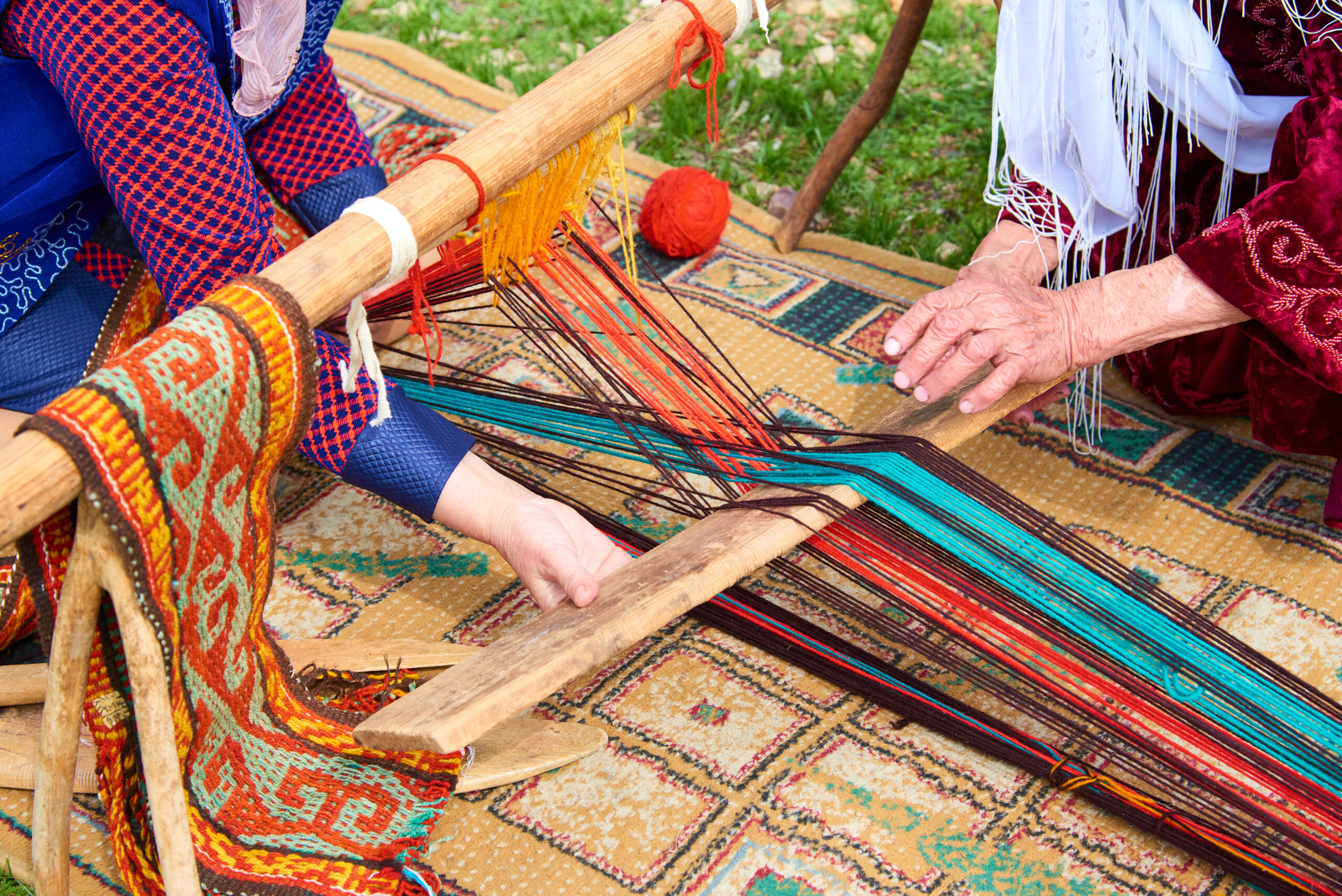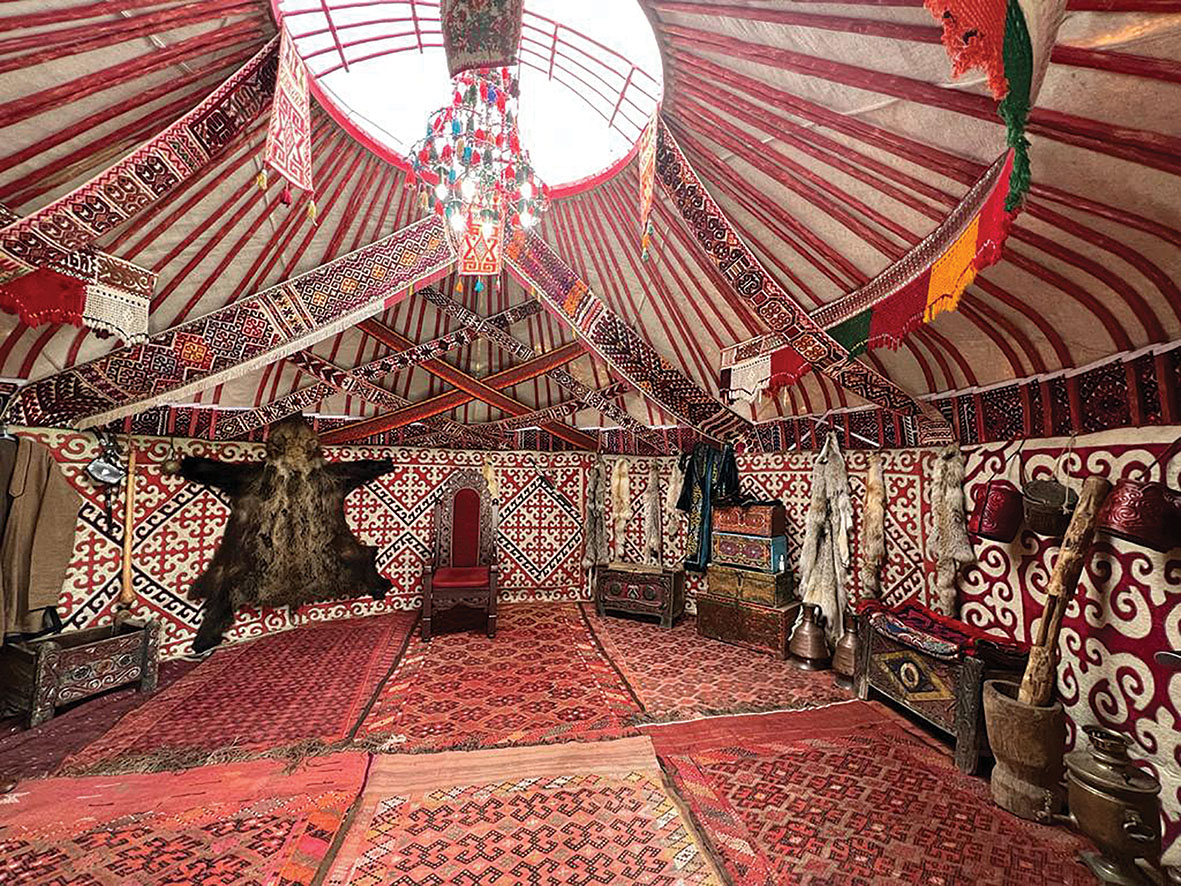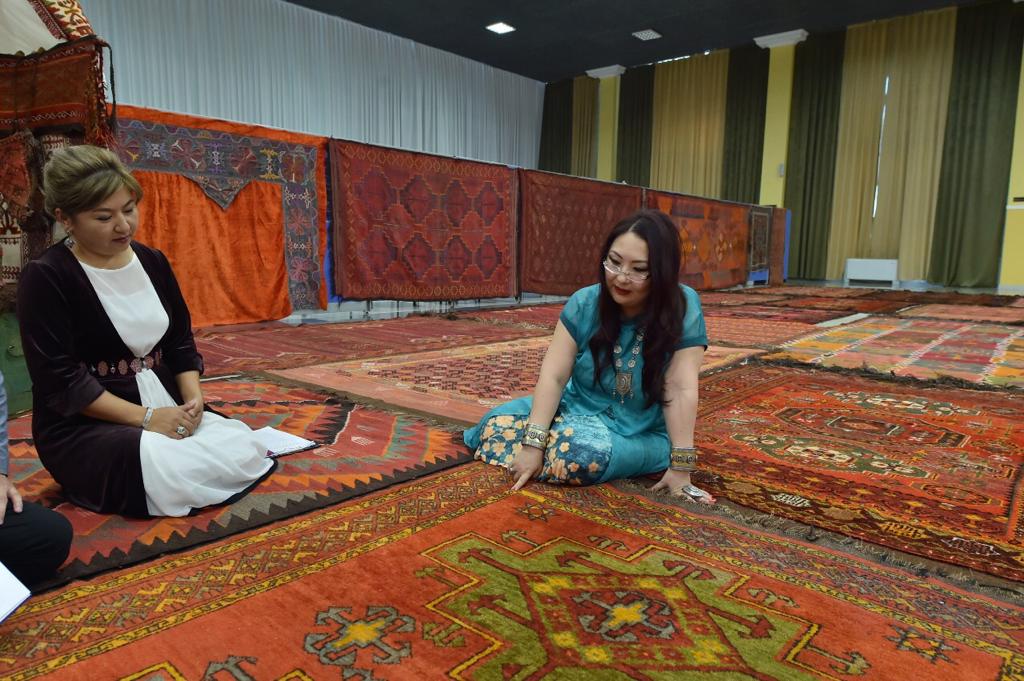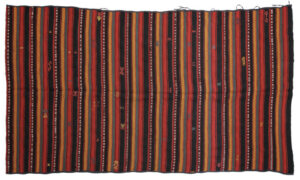ASTANA – Discovering Kazakh carpets can take one on a highly patterned journey through the centuries-old aesthetic tradition of nomadic people, their symbolism in design, and the simple practicalities of such an essential household item.

Carpets were very personal reflections of the hopes and dreams of women behind the loom. Photo credit: Yerbolat Shadrakhov, istockphoto.com
The ancient nomadic practice of carpet weaving remains one of the last vestiges of art that is fading away. In the early days, the craft of weaving was passed down through generations as it played an important life-sustaining role for a nomadic family.
The carpets were used for warmth and decoration, they were an obligatory part of a bride’s dowry. They were given as presents and even used to wrap the deceased’s body to set him off for the last journey.
But the role of carpets in the daily life of Kazakhs did not end with their functional significance.
An overwhelming sense one gets when entering a Kazakh yurt covered in carpets is that nomads mastered the art of creating a vibrant composition dwelled in meaning and symbolism. Whether hanging on the walls of a yurt or placed on the floor, a carpet depicts pasture scenes, religious beliefs, and rituals and serves a symbolic protective role.

Kazakh yurt interior is packed with vibrantly colored carpets and other woven products, such as bags, pillow and trunk covers, and wall bags for dishes. Photo credit: moldir-bulak.kz
The painstaking process of carpet making could take months, from shearing the sheep in spring and collecting the herbs used in dyes to weaving and coloring the carpets.
Only then could collectors get their hands on them. One of them is Dana Erik, who wants to popularise the dying art form. She has around 900 traditional Kazakh carpets at hand, enough to present at a separate carpet museum.
“I sound the alarm,” said Erik in her interview with Informburo news agency. “Most of the [carpet] heritage has gone abroad. At one time, foreigners bought up and exported magnificent specimens. What is left needs to be preserved. We need a Kazakh museum of carpets. We can represent our culture through carpets,” she said.
Few people today possess a meticulous devotion to carpet weaving, which once was a conventional skill of every Kazakh woman. To preserve their unique production, weavers teach young people the value of a nomadic rug and contend with competition from large carpet factories around the world.

Dana Erik has around 900 traditional Kazakh carpets at hand, enough to present at a separate carpet museum. Photo from Dana Erik’s personal archive, informburo.kz
“In the countries of the Middle East, Caucasus and Central Asia carpets have a sacred meaning. Cultural experts and guides can talk for hours about the art and historical significance of carpets. Ministries of carpet and weaving have been established and festivals are held. In Kazakhstan, these works are at best of an applied nature, mostly superficial, for sale of carpets. But it could become one of the symbols of the country. We only need to see and recognize its potential,” said Erik.
Symbolism in carpets
Originally, carpets were essential practical household items that were used daily. Similar to many household items in a nomadic lifestyle, they were not exempt from symbolic imagery and element of storytelling. There are many recognizable motifs and patterns, such as zoomorphic, cosmogonic, geometrical, and floral arrangements.

Pile rug with rhombic patterns made in the late 20th century in the South Kazakhstan Region. Photo credit: N. Alimbay, Central State Museum of Kazakhstan
While zoomorphic patterns such as animal horns symbolize wealth and prosperity, other geometric forms like rhombs are often references to female fertility. A simple, bold geometric design of a cross has nothing to do with religion. It often symbolizes the four sides of the world and the union of male and female, heaven and earth.
Women weaved the rugs for their homes. Mothers and grandmothers, creating carpets as a dowry for their daughters, laid down a wish for a long and happy life. The stronger the mother’s love, the more skillful and beautiful the pattern. Carpets were very personal reflections of the hopes and dreams of women behind the loom.
The color used by the masters also has a message. Red symbolizes life, yellow represents wisdom and wealth, green represents youth and spring, and white demonstrates the purity of thought and happiness.
Carpet types
To truly appreciate Kazakh carpets, one needs to understand the diversity of forms and versatility of their use.
The Kazakh carpet is divided into pile and lint-free. Lint-free carpets are mainly woven on a vertical loom by interlacing the warp threads with the patterned weft thread. The pile carpets are woven on horizontal looms in southern Kazakhstan and mainly on vertical looms in the Zhambyl Region.

Alasha carpet. Photo credit: N. Alimbay, Central State Museum of Kazakhstan
There is also a clear distinction to be made between wall carpets and floor carpets.
Possibly the most popular and well-known of all carpet designs is tuskilem or tuskiyiz carpet, a product designed solely for hanging on the wall, over a bed or bedding, stacked in a separate neat pile in the center of the walls of the dwelling. The lower part of it, called etek, which is covered with bedding, was not framed, so it is unclosed on the bottom.
The pieces with multicolored threads that can be found splashed across the yurt interior are examples of alasha carpets. It was woven on a narrow loom into 30-40 centimeter strips, decorated with a woven pattern, and usually sewed into a 4*2 meter piece.
Certain carpet types were made from felt, such as syrmak, a felt rug made by sewing two different colored identical designs in the mosaic technique, and tekemet, a larger piece of felt carpet with an embroidered color pattern.
The importance of the objects of weaving is confirmed by the number of woven products, such as bags, pillow and trunk covers, wall bags for dishes, mats, saddlebags, and more than 25 other items – a result of the practicality and necessity of nomads.
Understanding the value behind the carpet weaving tradition is crucial to keeping it alive. A nomadic carpet is not just a rug, it is a legacy of people.

